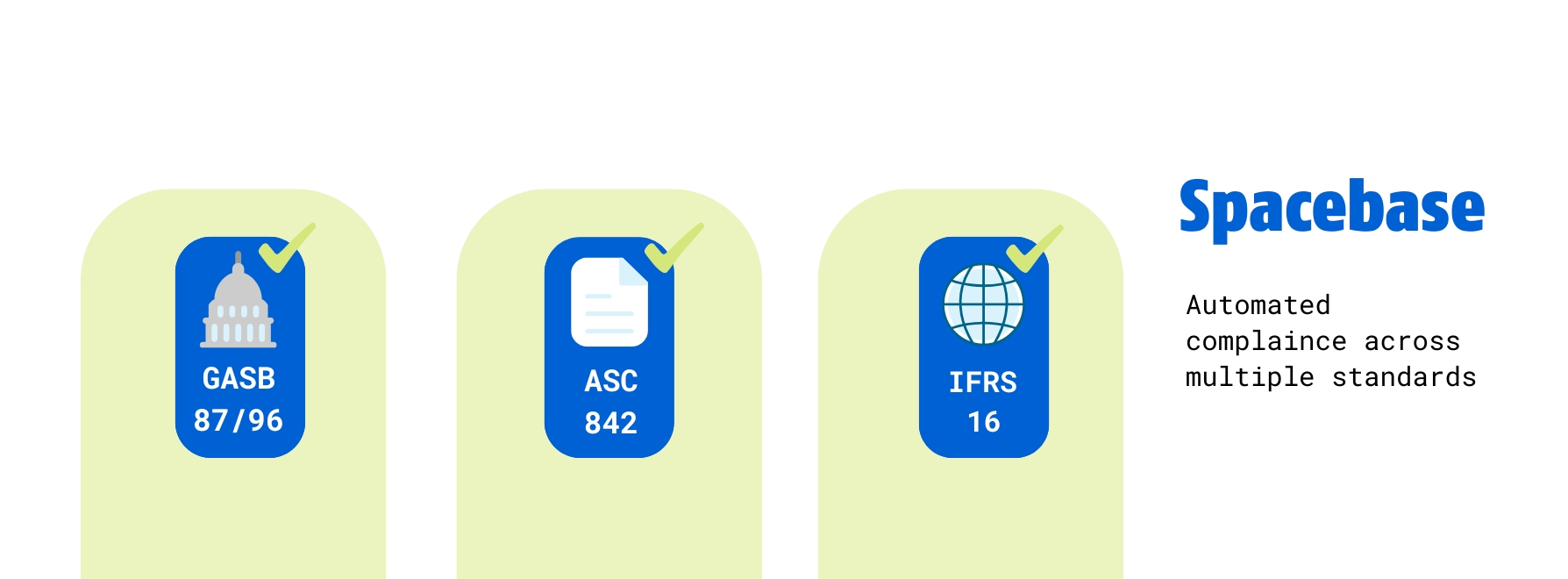What if My Company Needs to Comply with Multiple Lease Accounting Standards?

Companies operating across borders, industries, or reporting requirements often find themselves needing to comply with more than one lease accounting standard at the same time. A U.S.-based public company with overseas subsidiaries may need both ASC 842 (U.S. GAAP) and IFRS 16. A public university could fall under GASB while also reporting internationally. And for global enterprises, balancing multiple standards is a common practice.
Attempting to manage these overlapping standards with outdated tools or spreadsheets quickly leads to errors, inefficiencies, and compliance risks. Fortunately, there’s a better way.
Why Multiple Standards Come Into Play
Different accounting frameworks exist because reporting requirements vary based on geography, industry, and regulatory body. Some of the most common lease accounting standards include:
- ASC 842 – Required for U.S. companies under GAAP.
- IFRS 16 – The international equivalent, adopted widely outside the U.S.
- GASB 87 & GASB 96 – Standards for government entities and organizations that handle subscription-based IT arrangements.
A company may need to comply with two or more of these at once if:
- They operate subsidiaries in multiple jurisdictions.
- They are publicly traded but also manage government or nonprofit entities.
- Their auditors or regulators require dual reporting.
The Challenges of Juggling Standards
Handling multiple standards isn’t just a matter of translating numbers—it requires different calculations, disclosures, and reports.
- Separate lease liability and ROU asset calculations depending on the standard.
- Different discount rate applications across frameworks.
- Dual journal entry exports for ERP systems.
- Increased disclosure requirements during audit cycles.
Without purpose-built software, teams often end up duplicating effort, re-entering lease data, and running the risk of introducing errors.
How Spacebase Handles Multi-Standard Compliance
Spacebase was designed to remove this complexity. Each compliance standard is automated with its own set of rules so that calculations, disclosures, and reporting align with the standard being applied.
To optimize compliance in Spacebase’s accounting module, companies create two records of the same lease—one for ASC 842 and one for IFRS 16, for example. This approach ensures that each standard’s requirements are met accurately while still pulling from the same centralized lease data.
From there, Spacebase automates:
- Journal entries for each standard.
- Disclosure reports specific to ASC 842, IFRS 16, or GASB.
- Parallel reporting so auditors, stakeholders, and regulators can receive the correct outputs without duplication of effort.
This means your team can manage compliance for multiple standards simultaneously without building complicated manual workarounds.
Example in Practice
Imagine a multinational healthcare company headquartered in the U.S. The parent entity must comply with ASC 842, but its European subsidiaries must meet IFRS 16. With Spacebase, the finance team enters the lease information once, then creates two records of that lease—one tagged for ASC 842, the other for IFRS 16.
From there, both sets of calculations and reports are automatically generated. Instead of managing multiple spreadsheets or running duplicate reconciliations, the company can easily provide accurate outputs for both U.S. and international reporting.
Compliance Without Complexity
Multi-standard lease accounting doesn’t have to be overwhelming. With Spacebase, teams can confidently handle ASC 842, IFRS 16, GASB 87/96, or any combination—all while relying on a single platform built for accuracy and ease of use.
👉 Want to see how Spacebase streamlines multi-standard compliance for your team? Request a demo today.

Brooke Colglazier
Marketing Manager